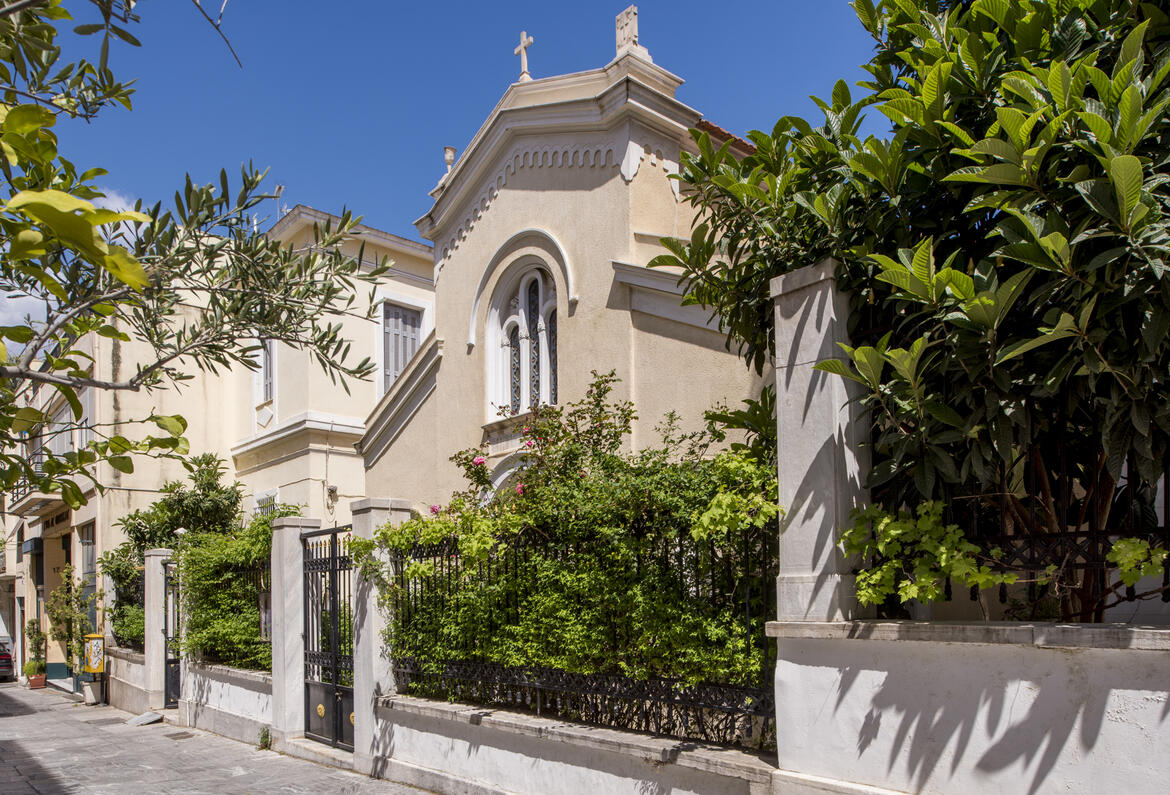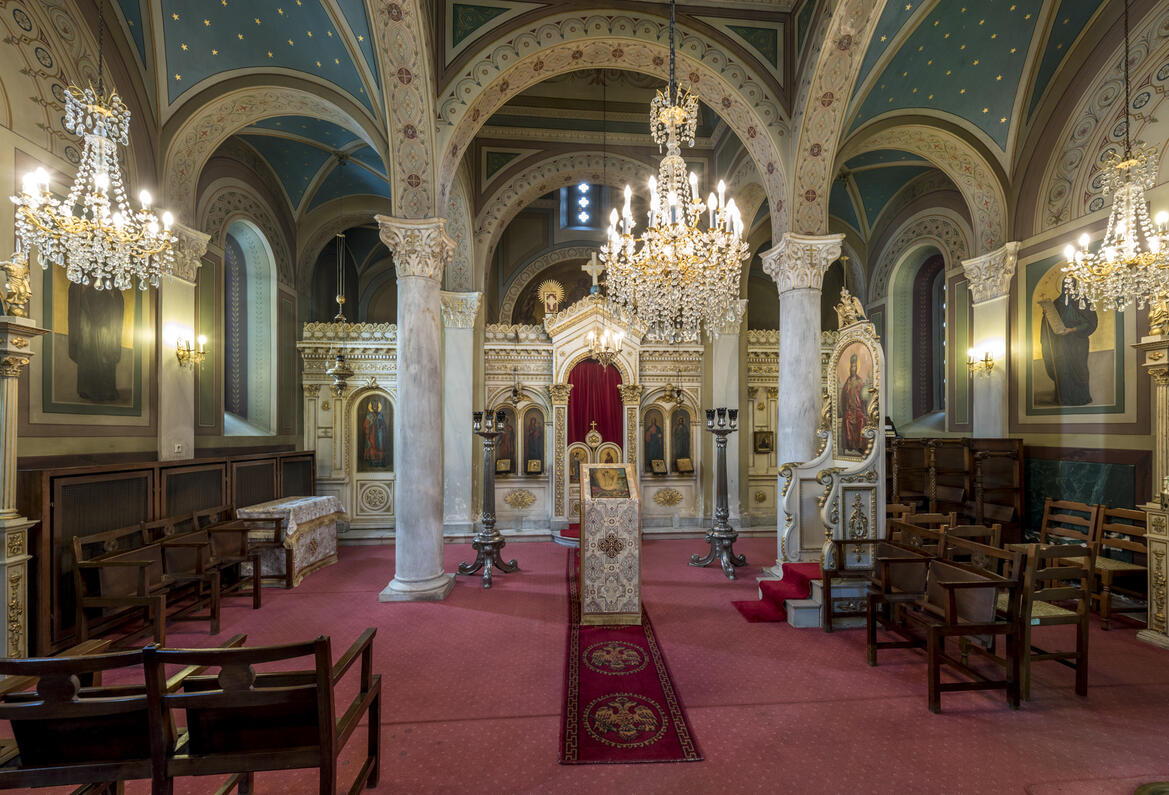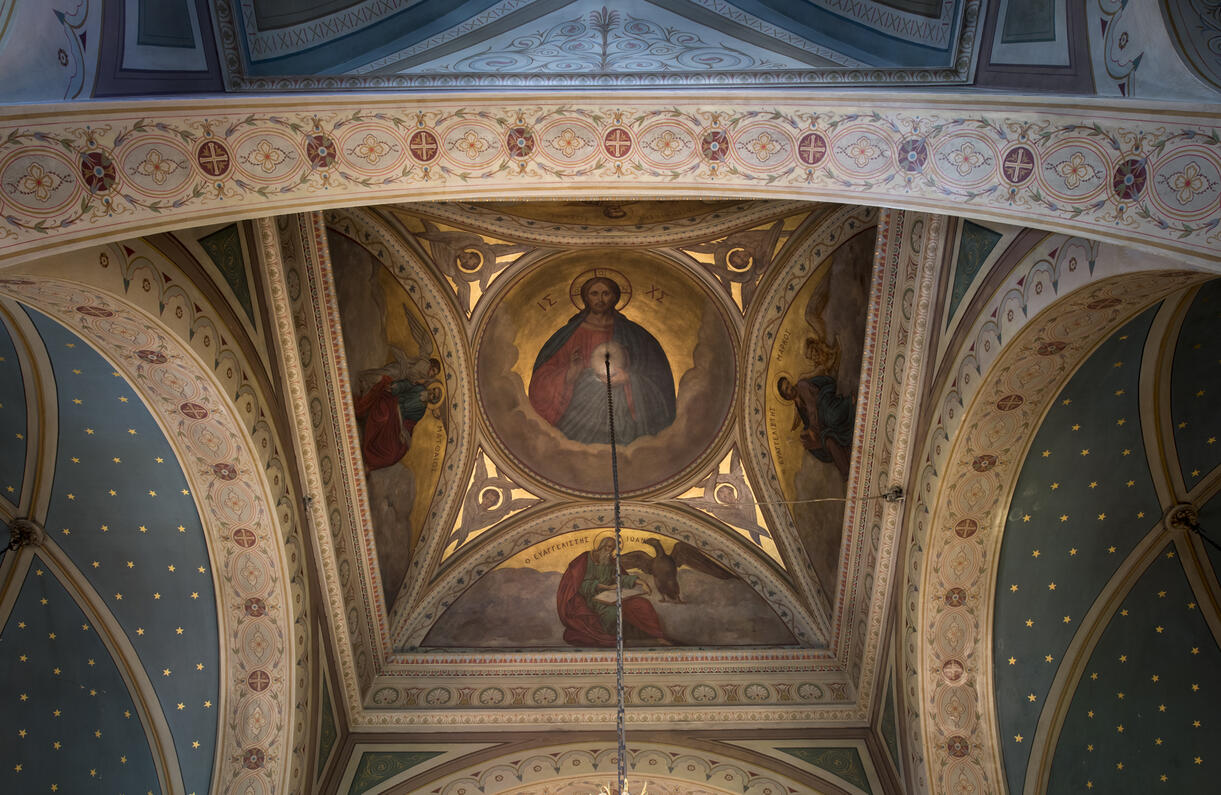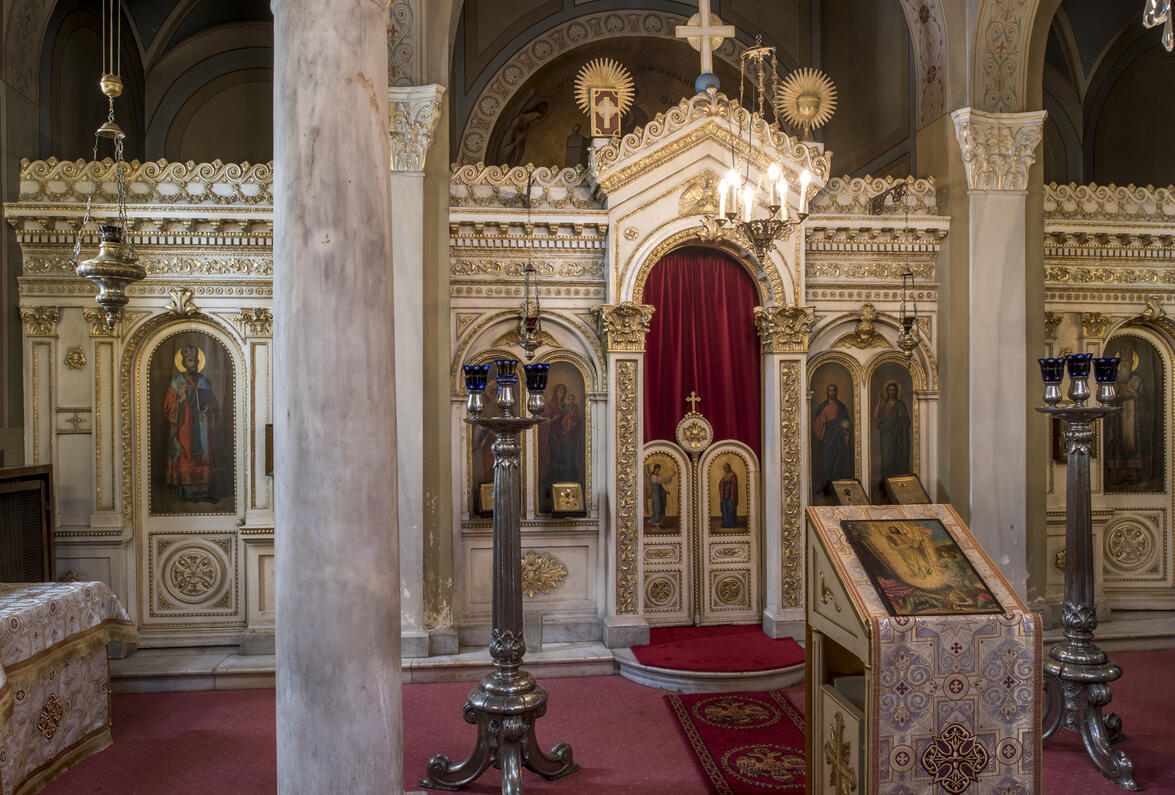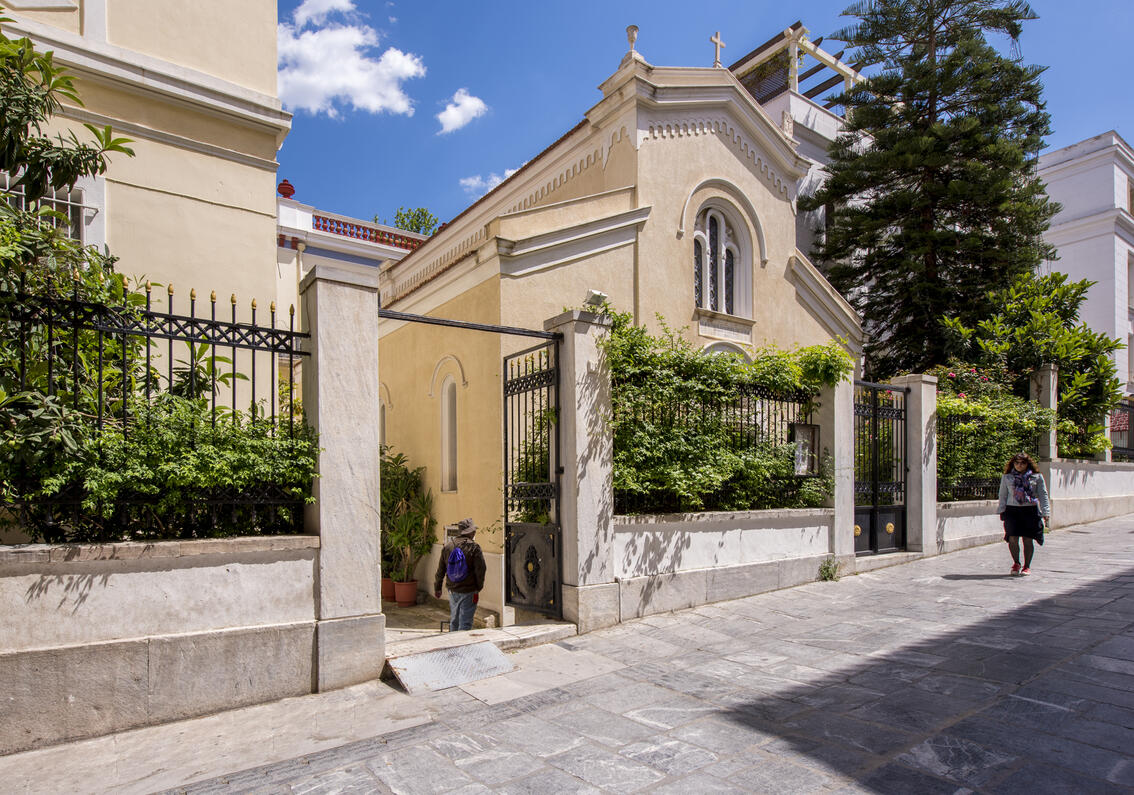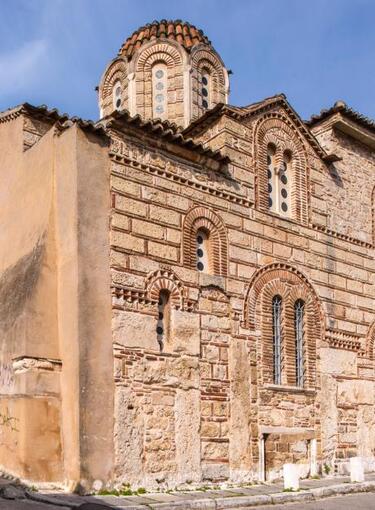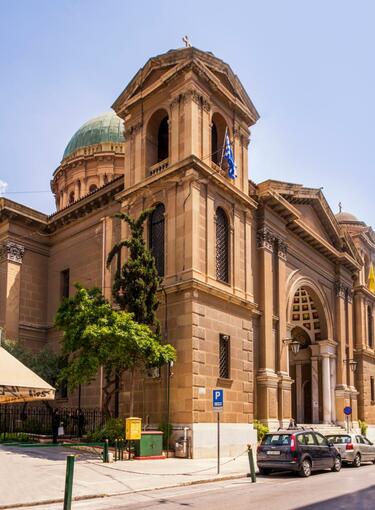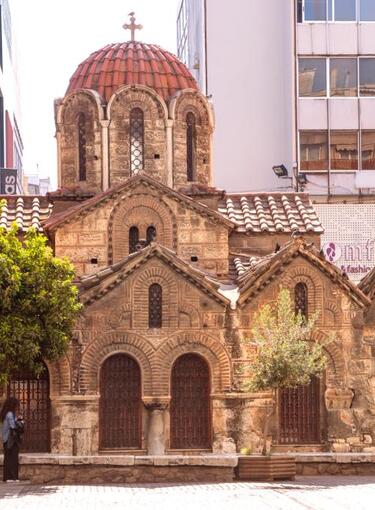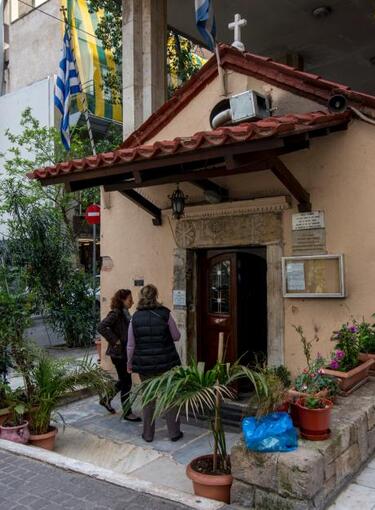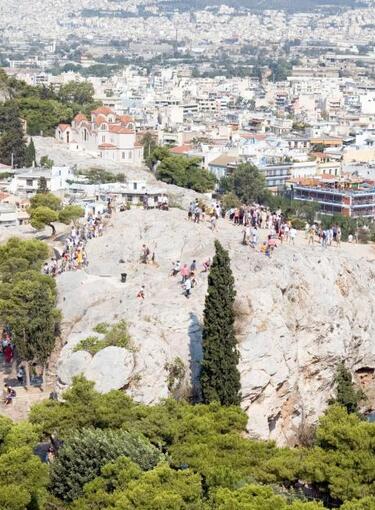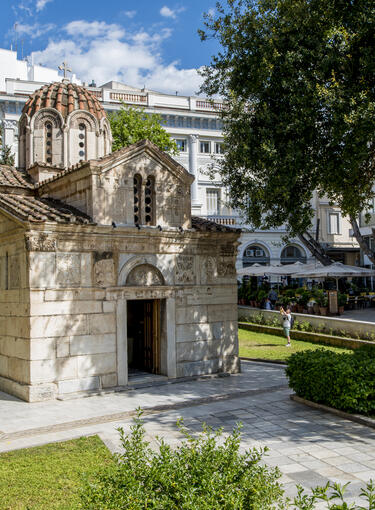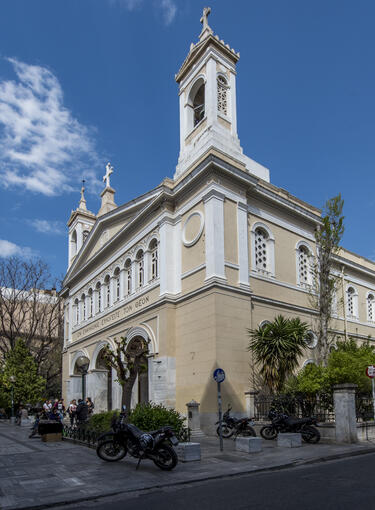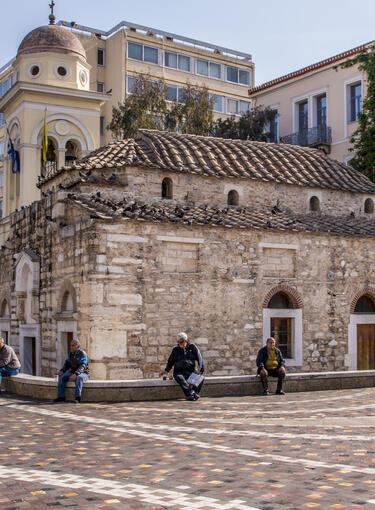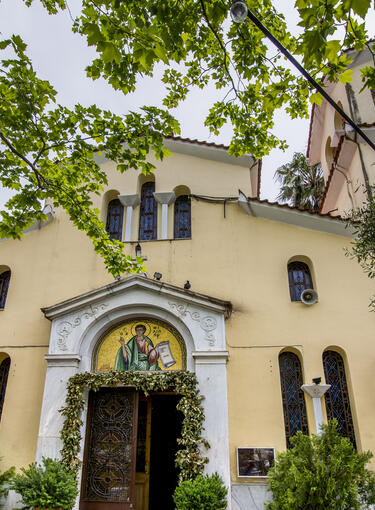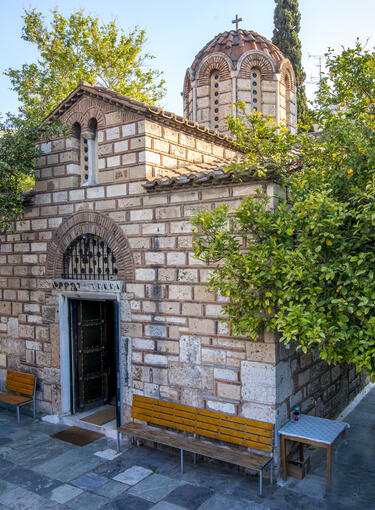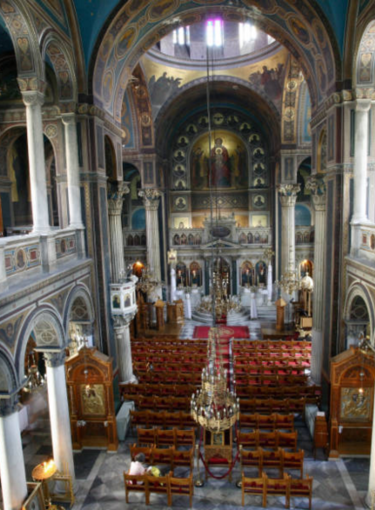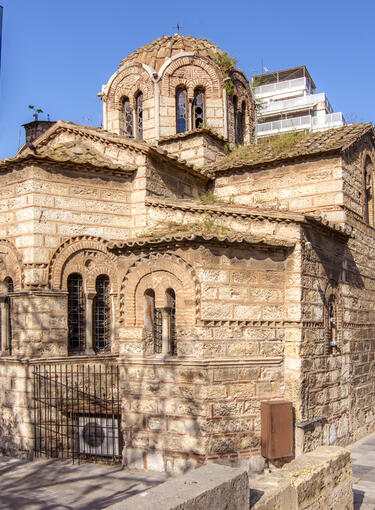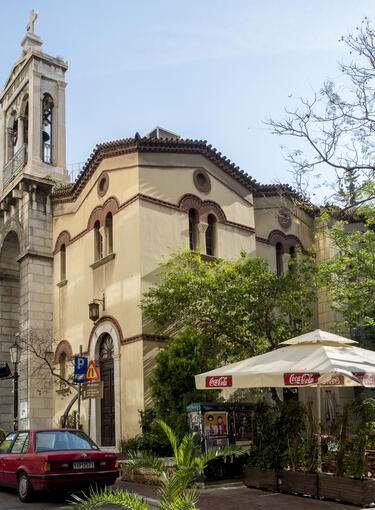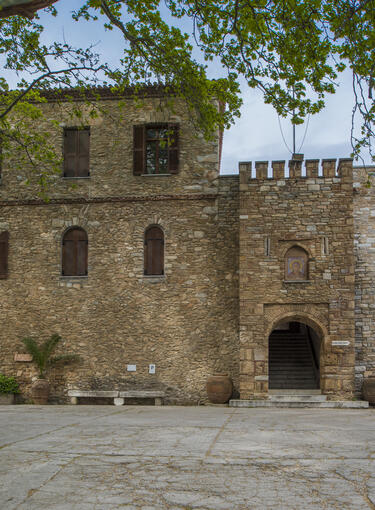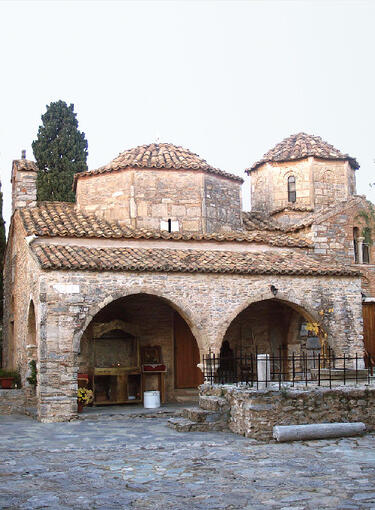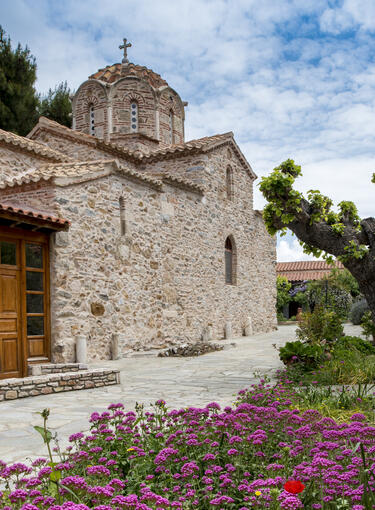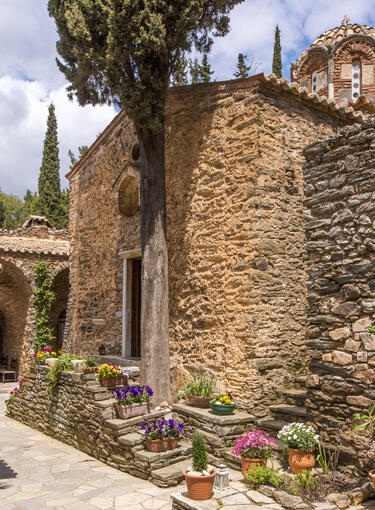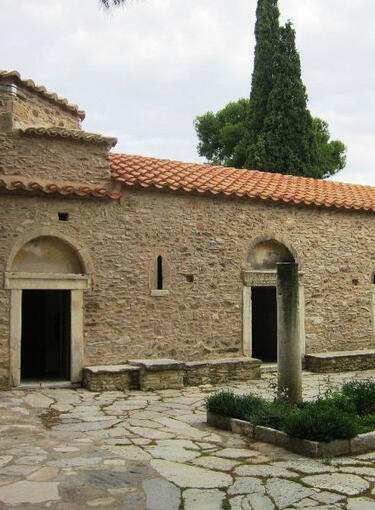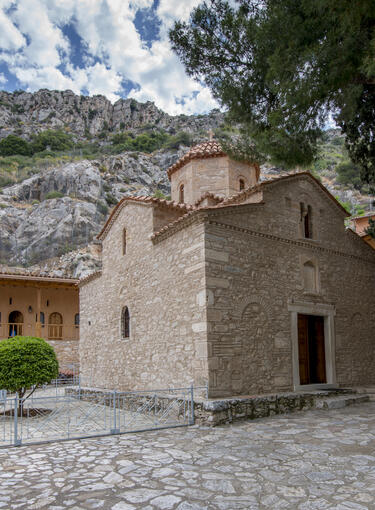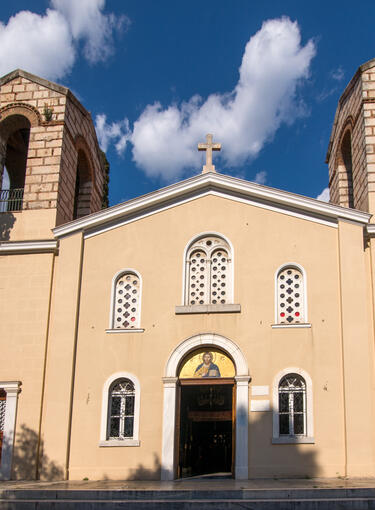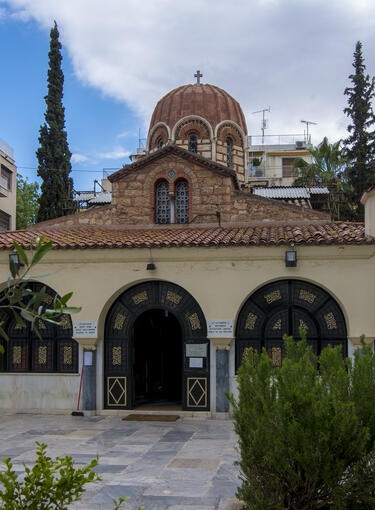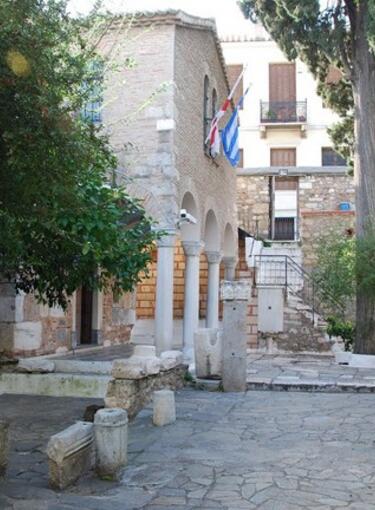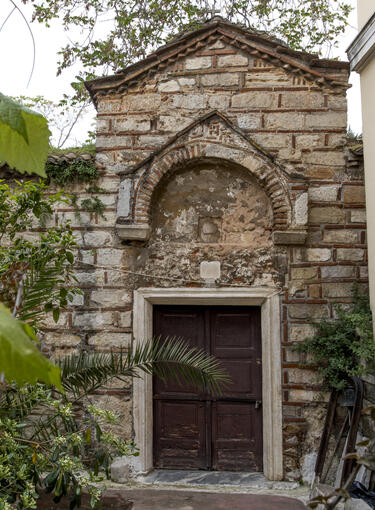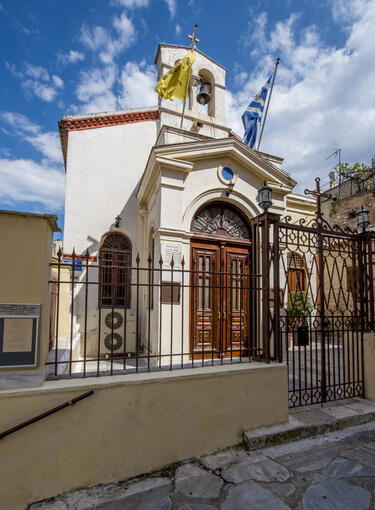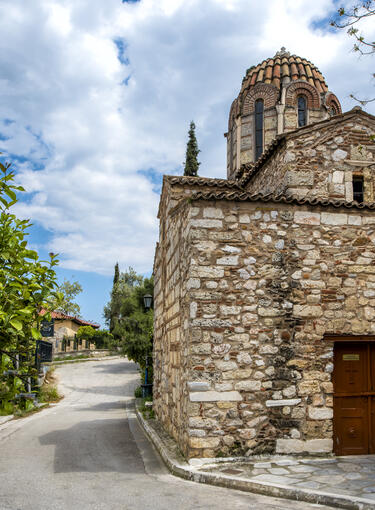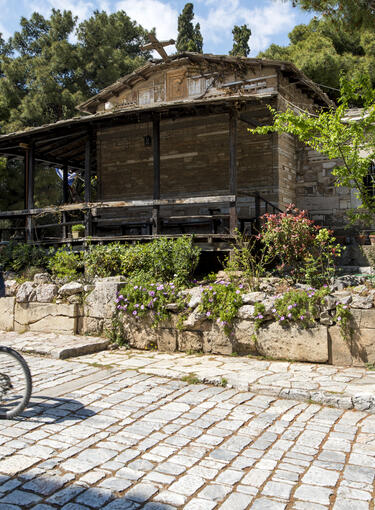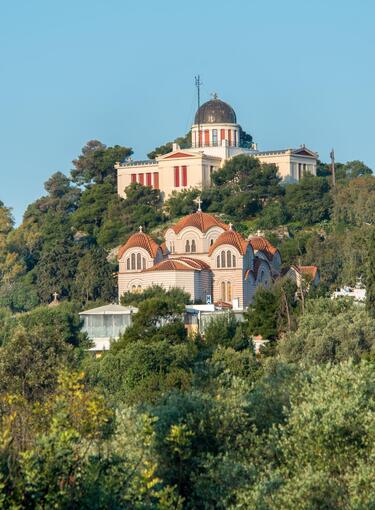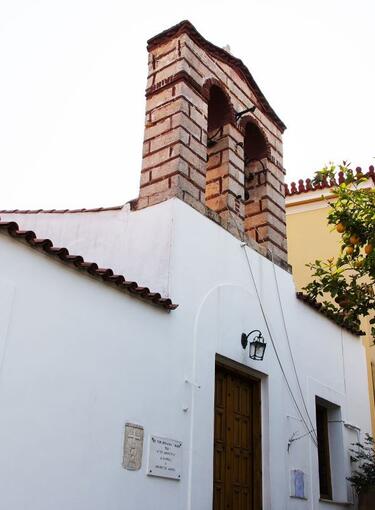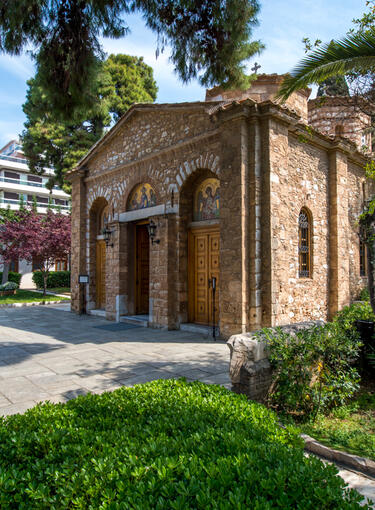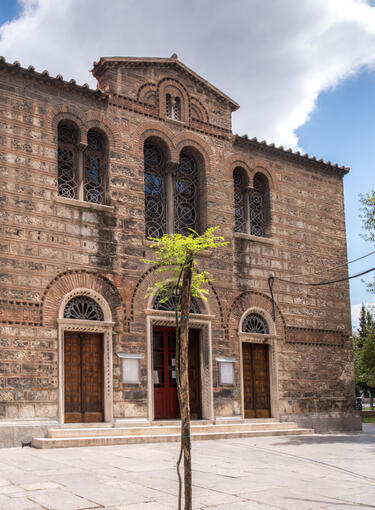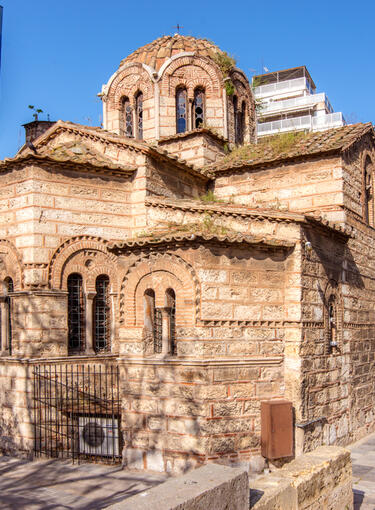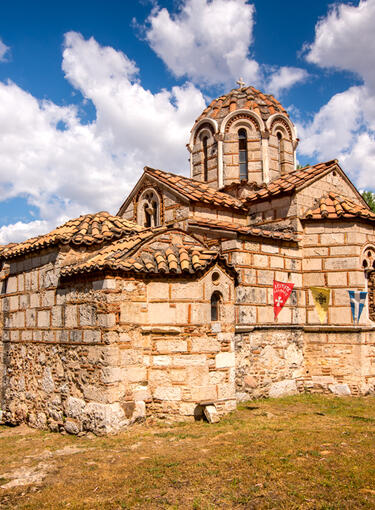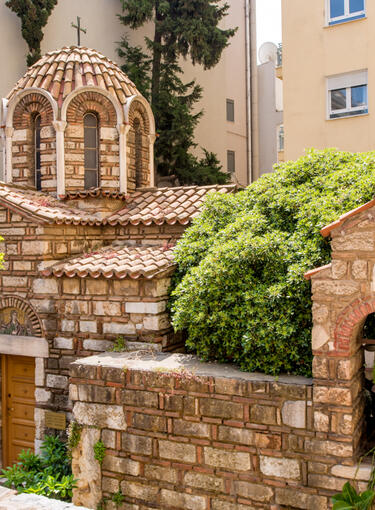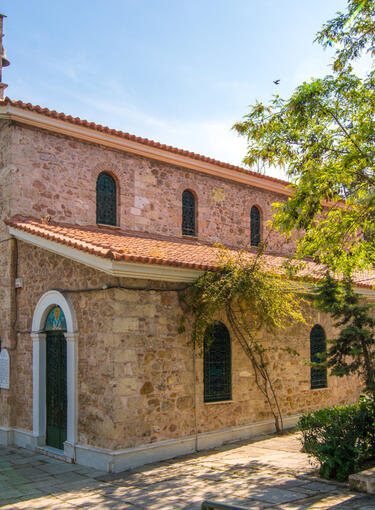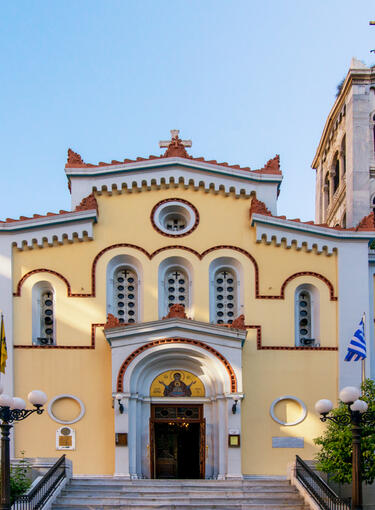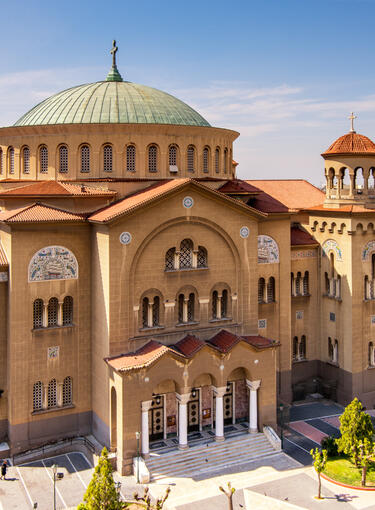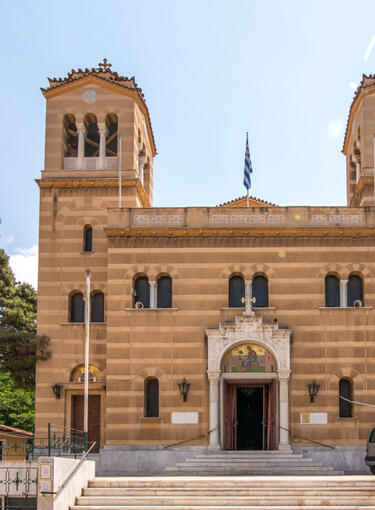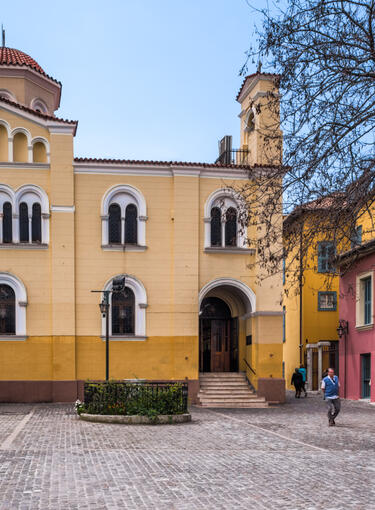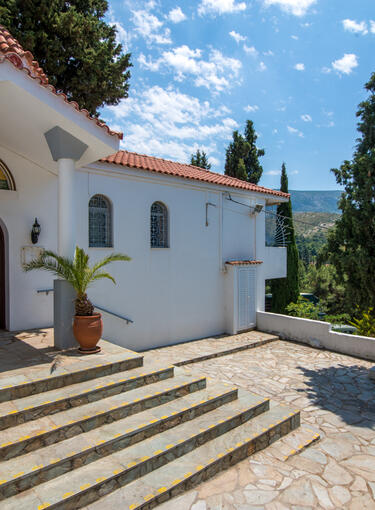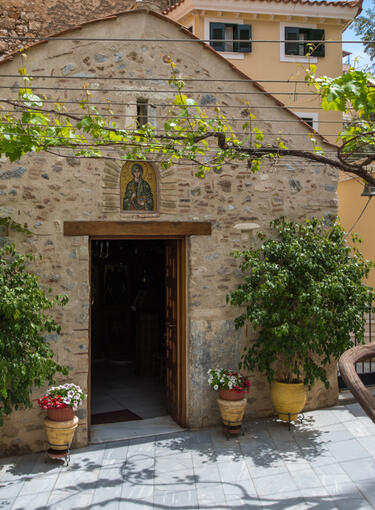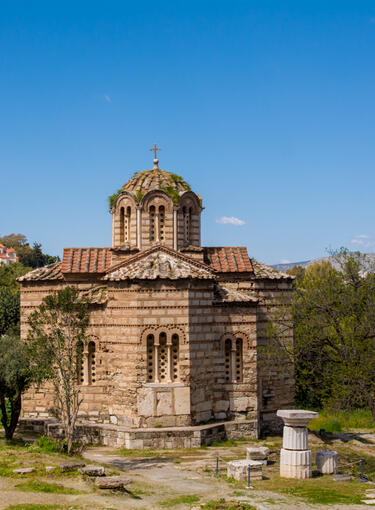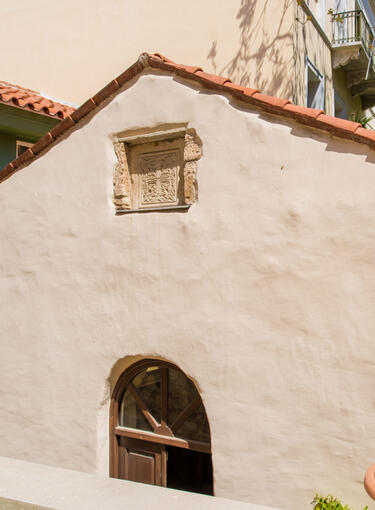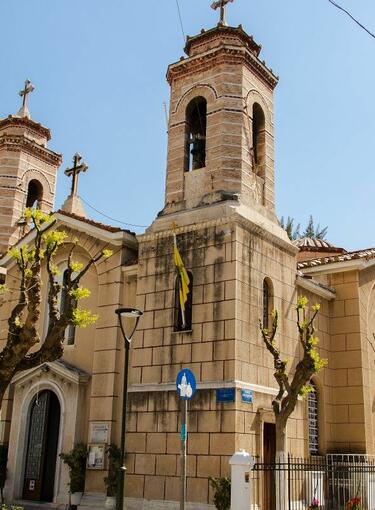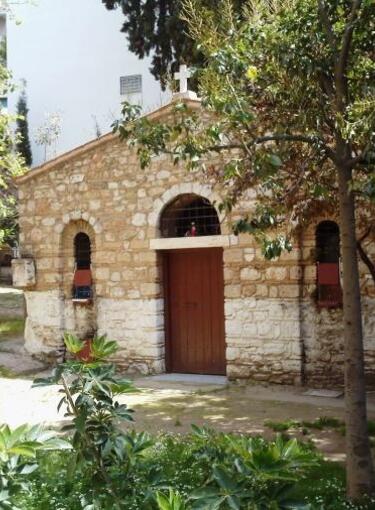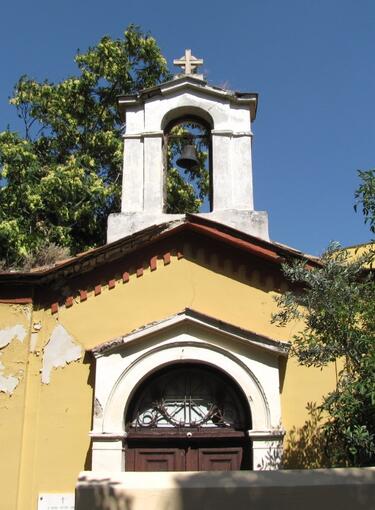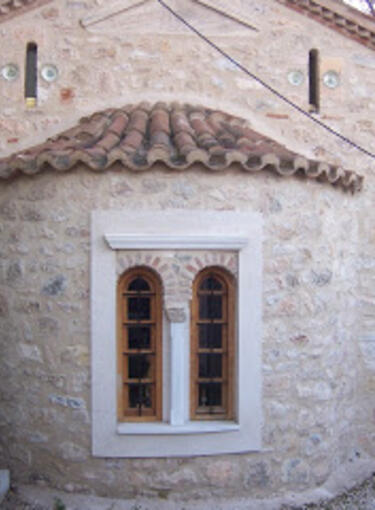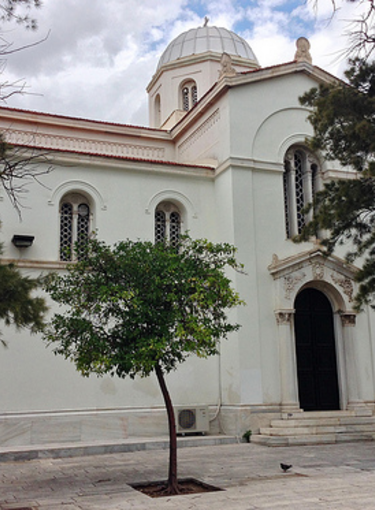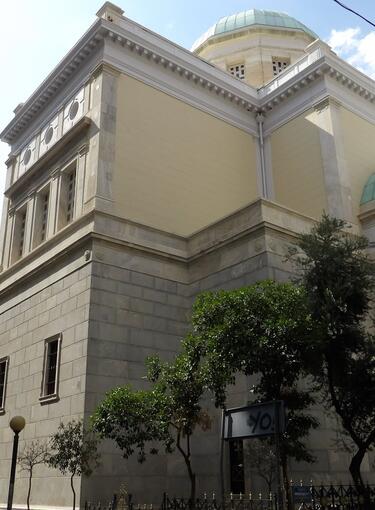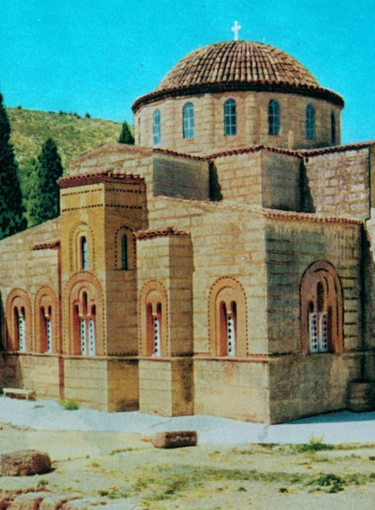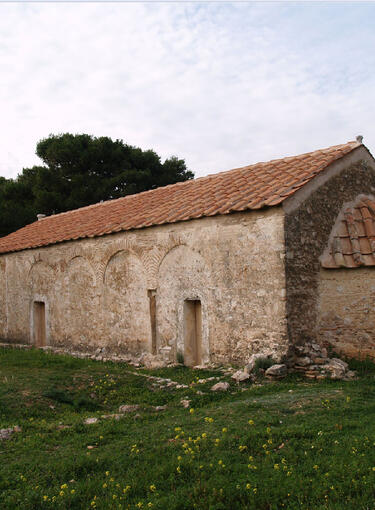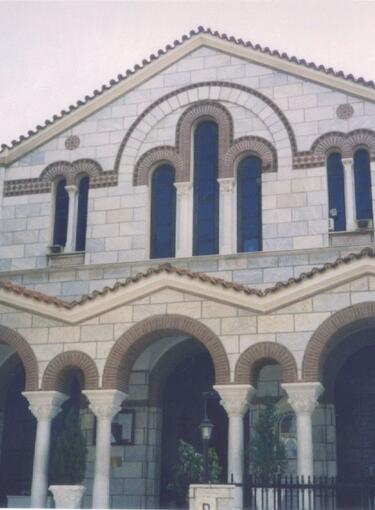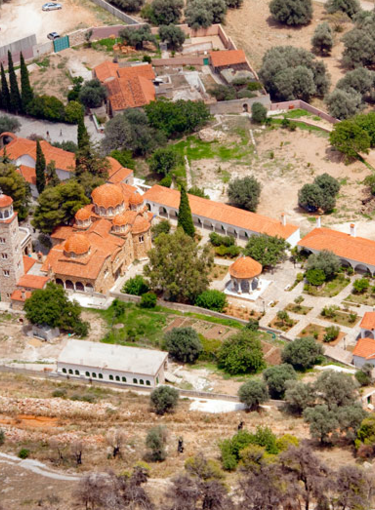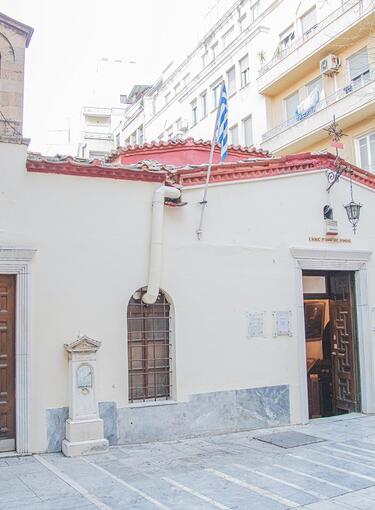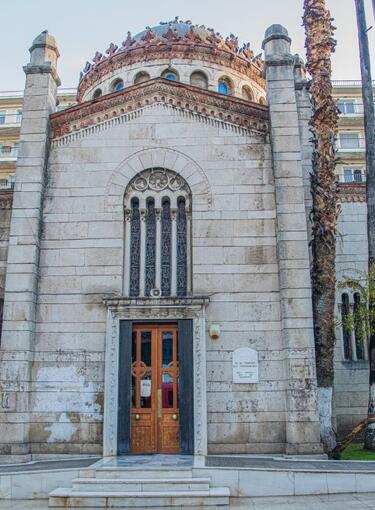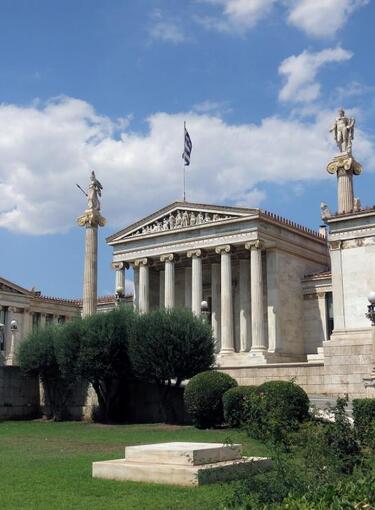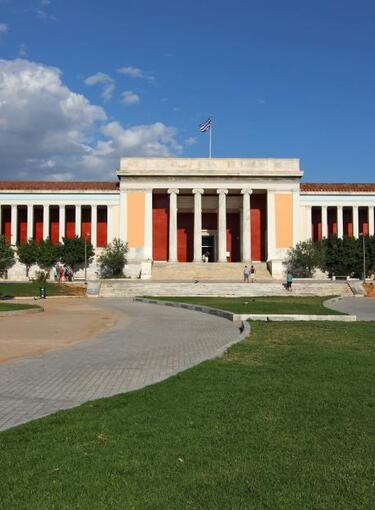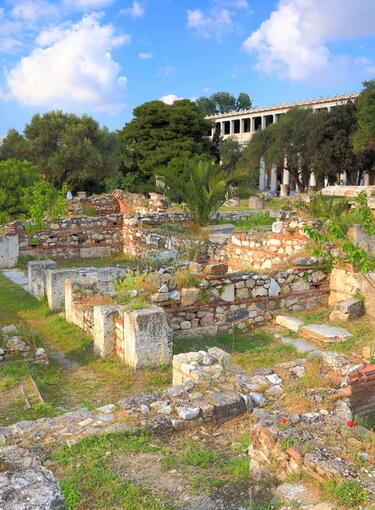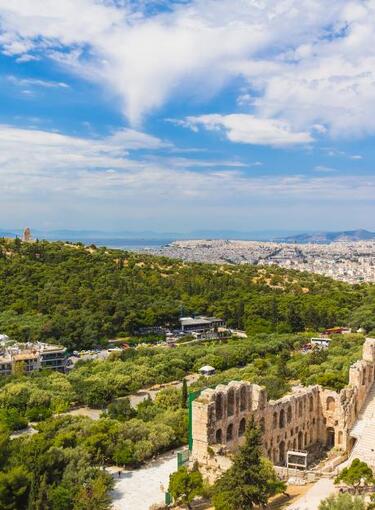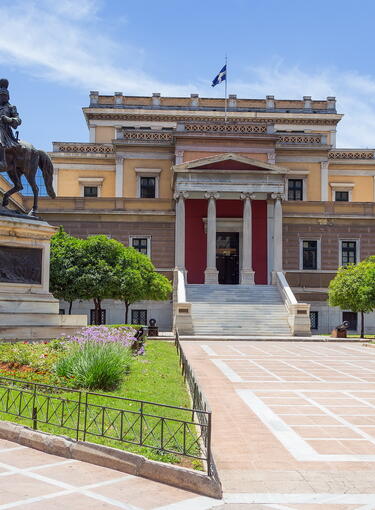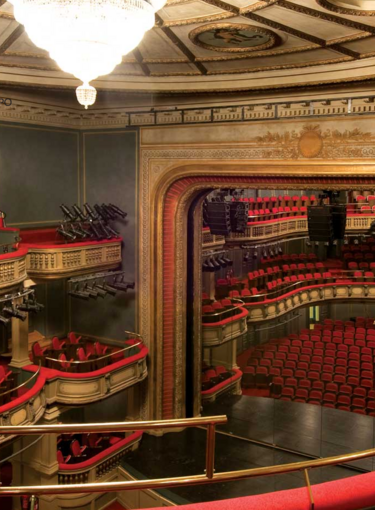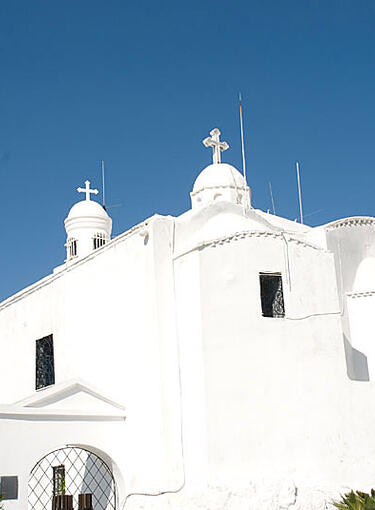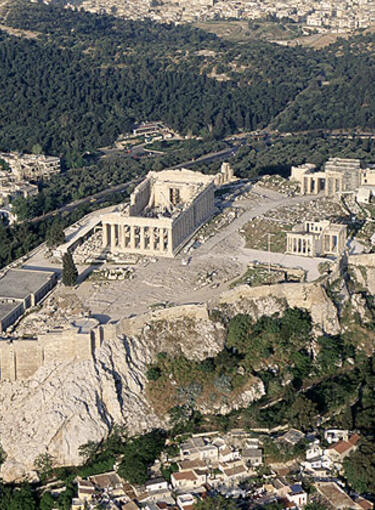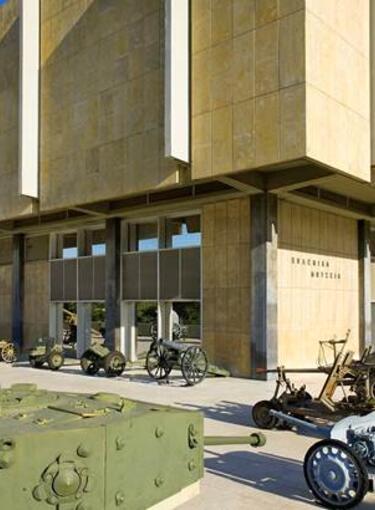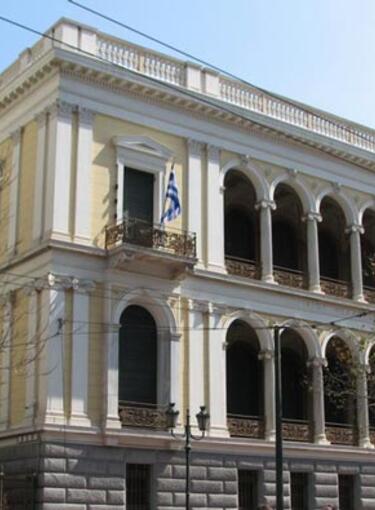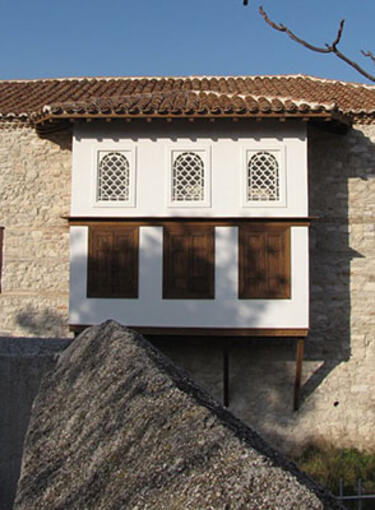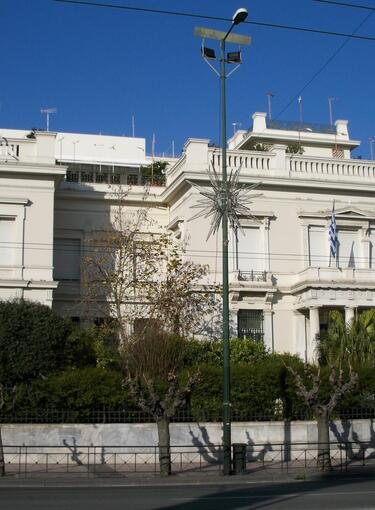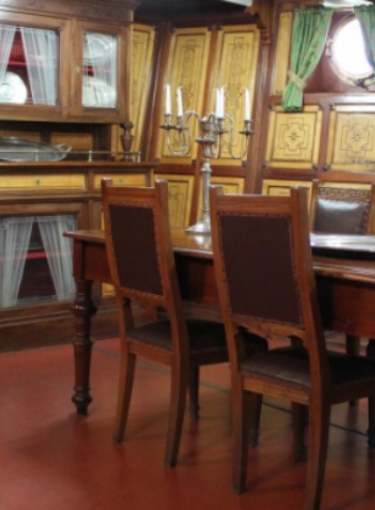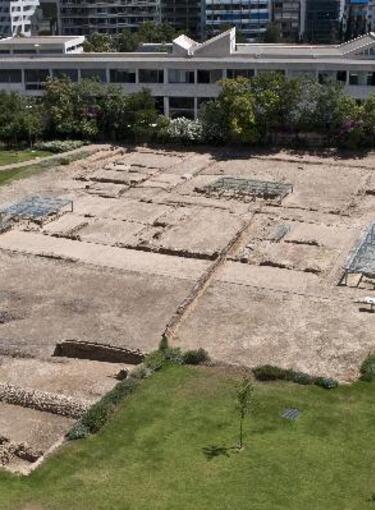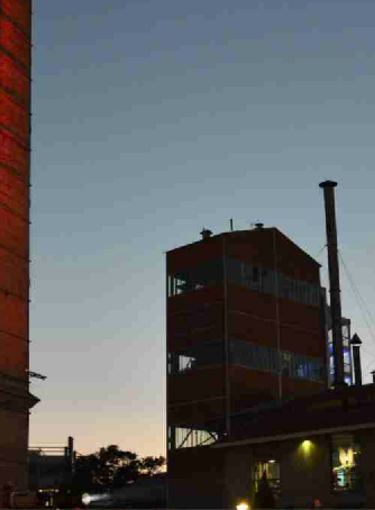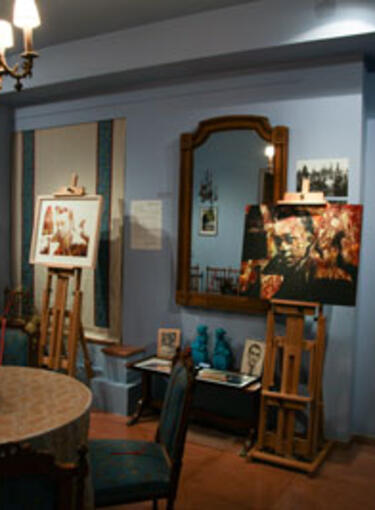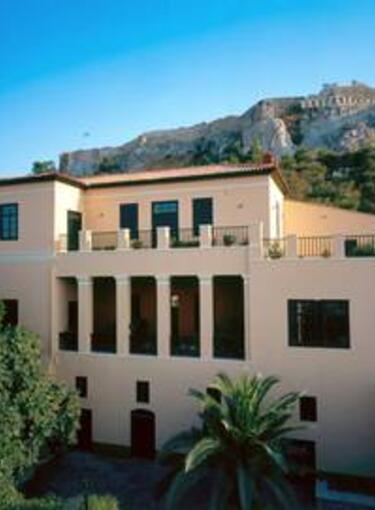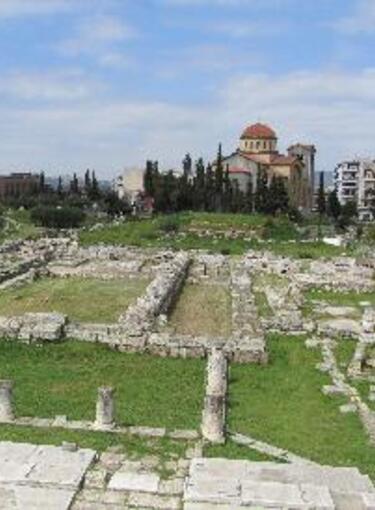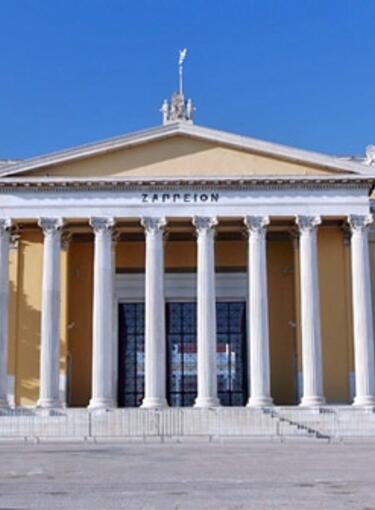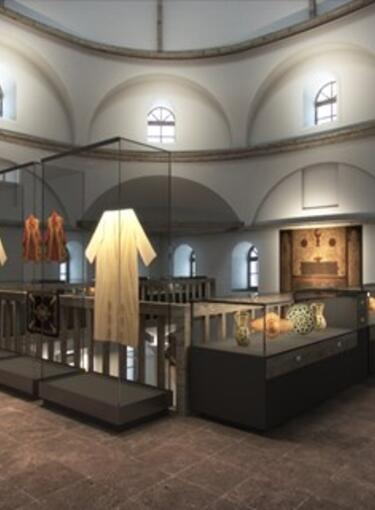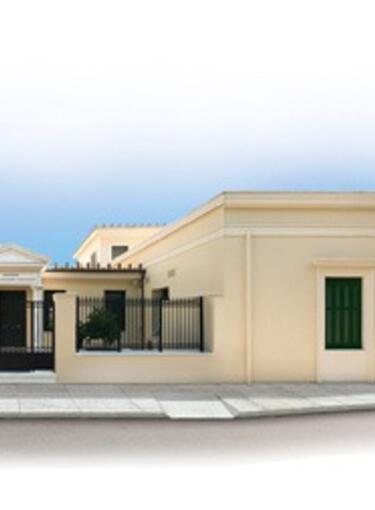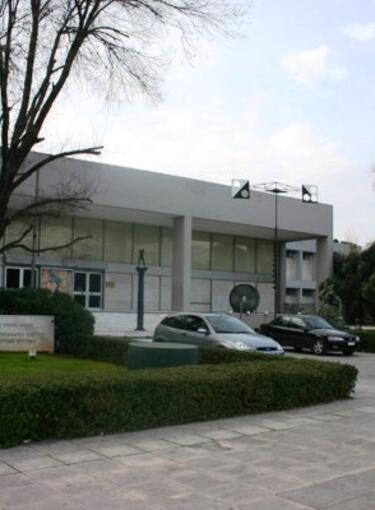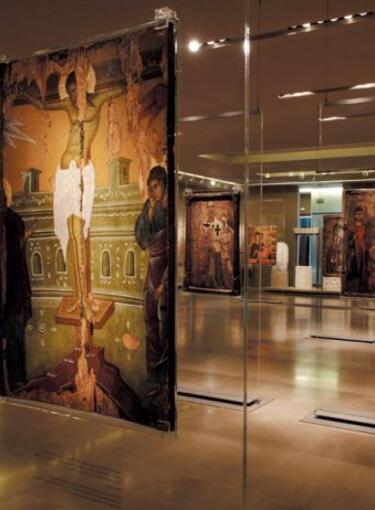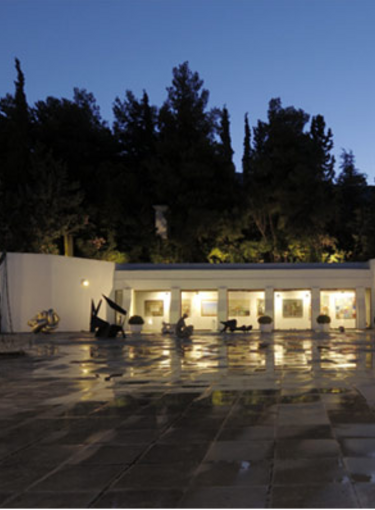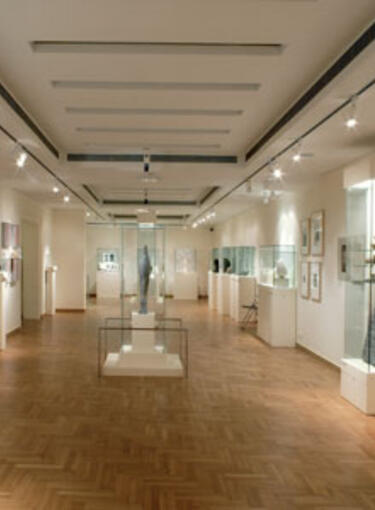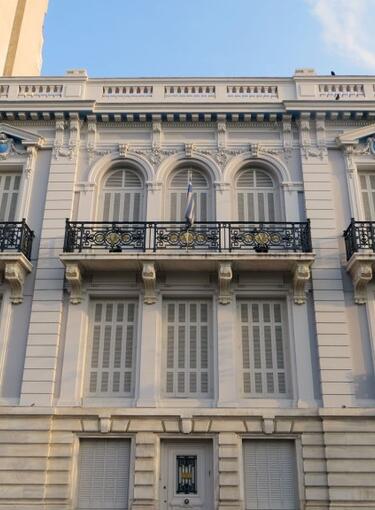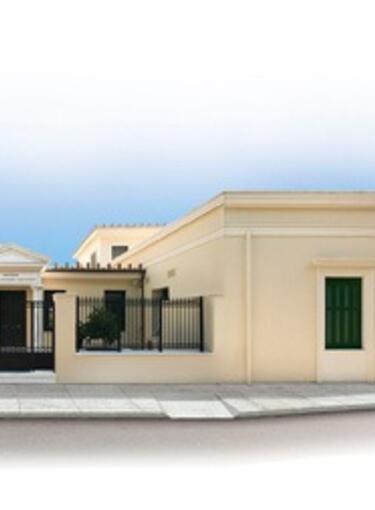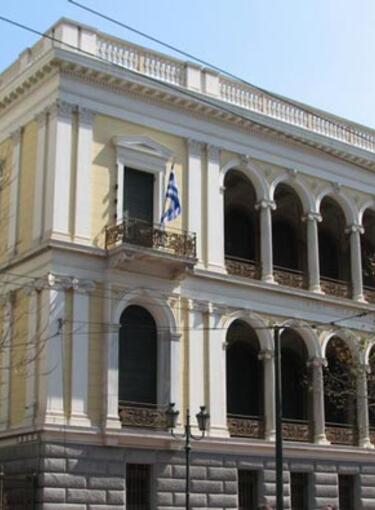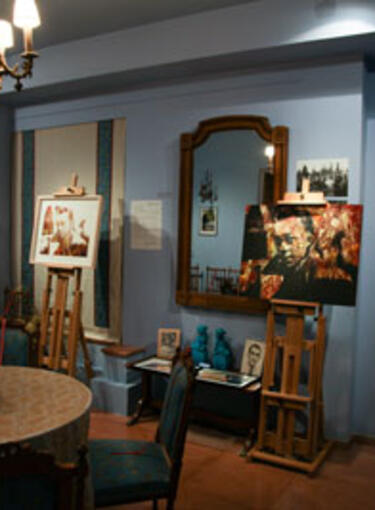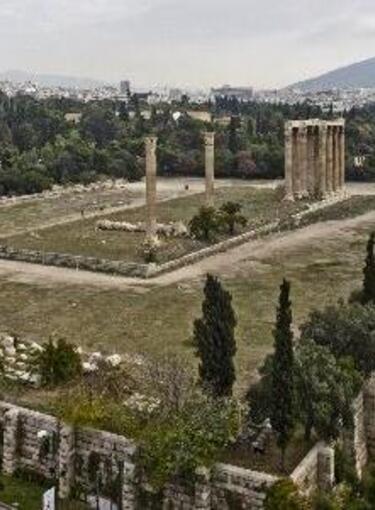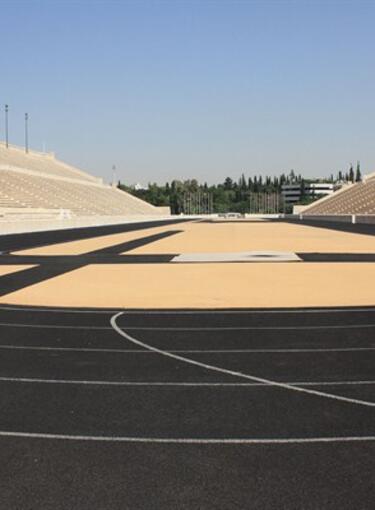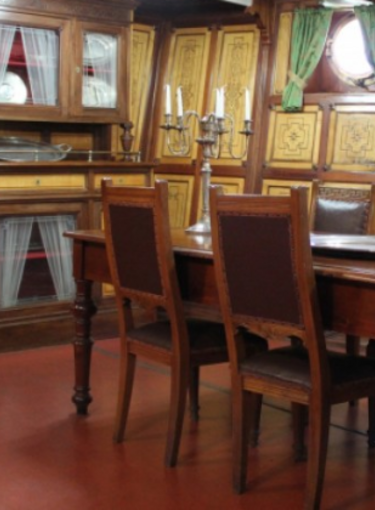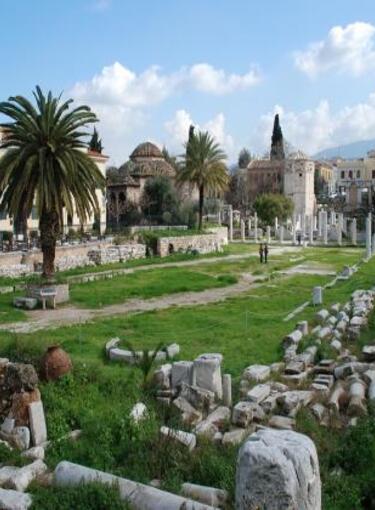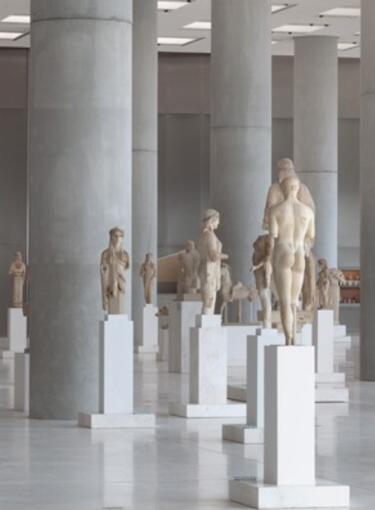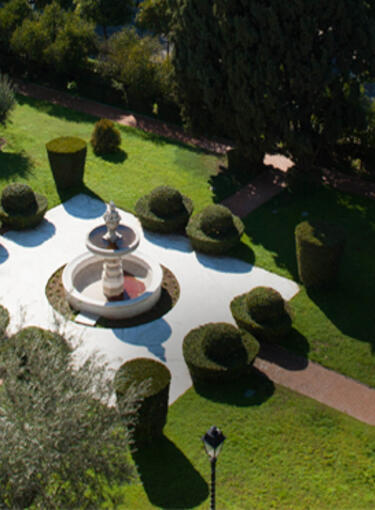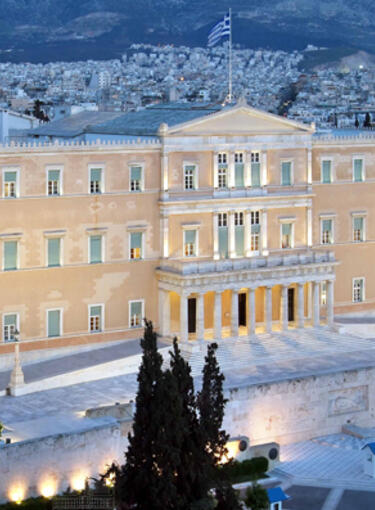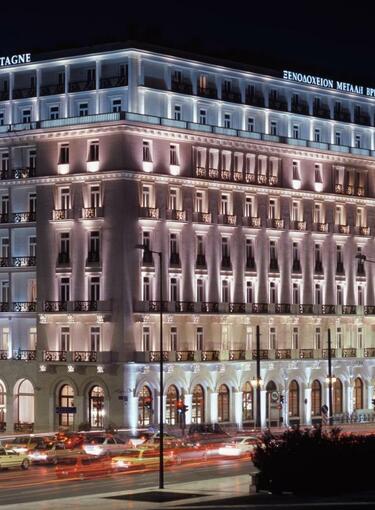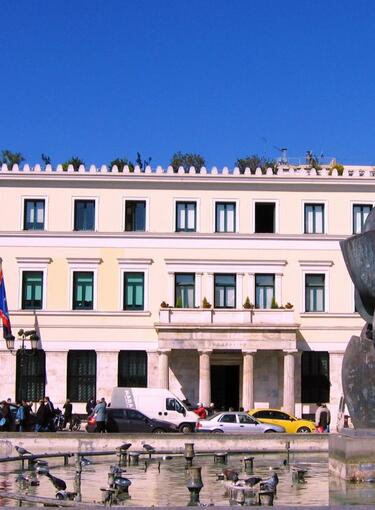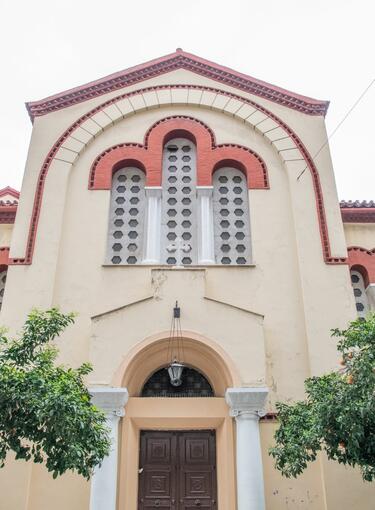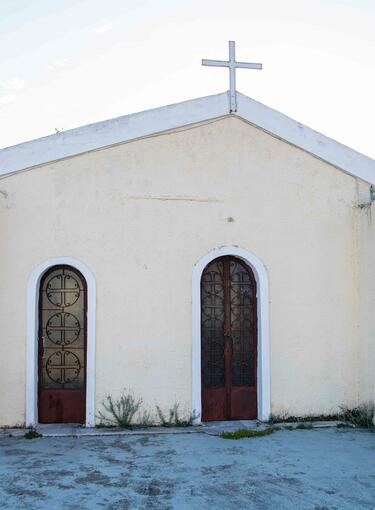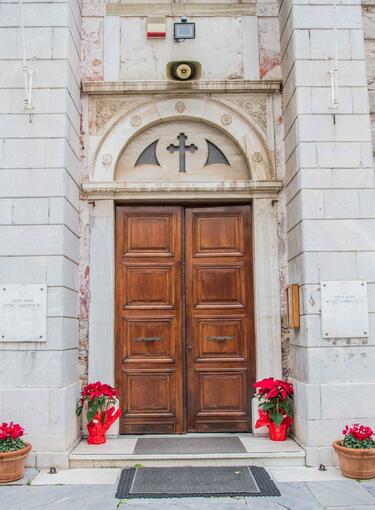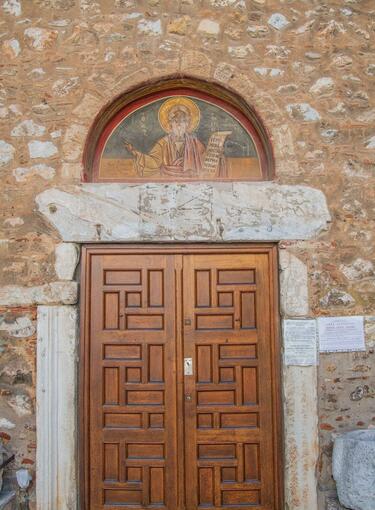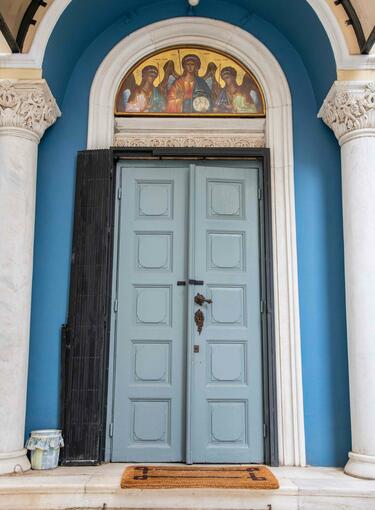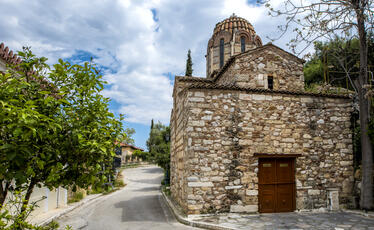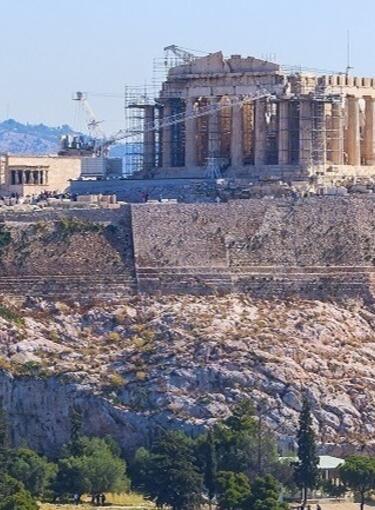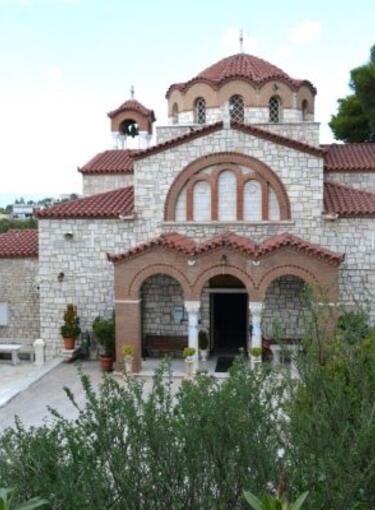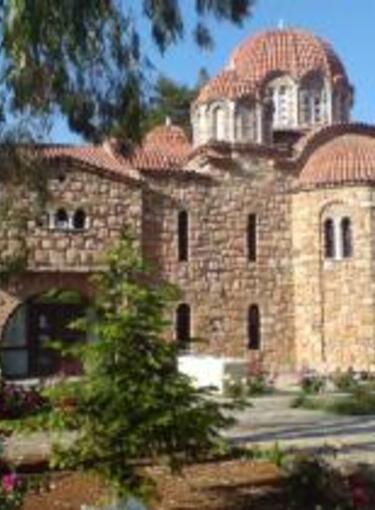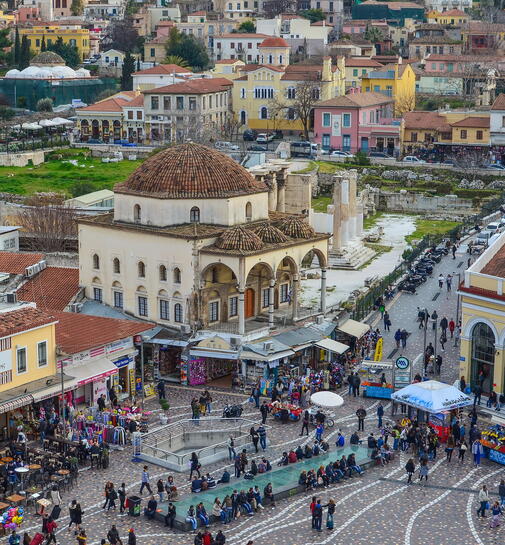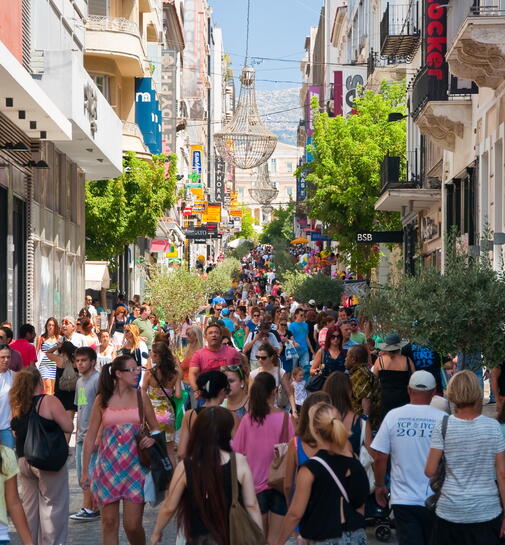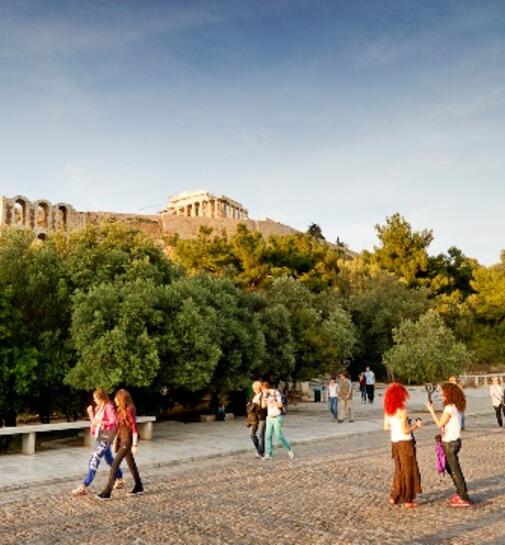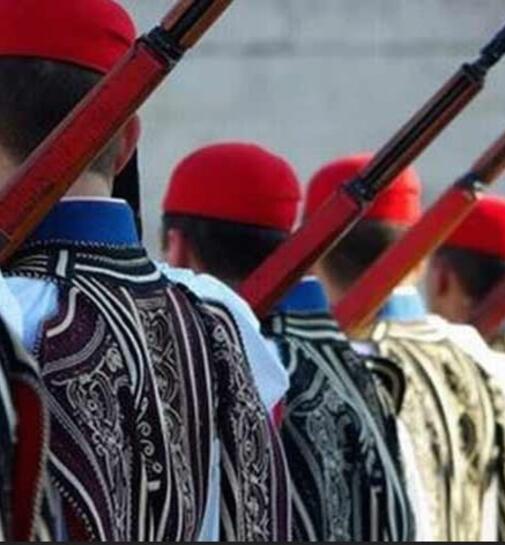At the yard of the mansion of the Archdiocese of Athens, at Agias Filotheis street, is the church of Agios Andreas, a monument that is related to the history of the city and the activity of one of the most important Athenian personalities of the period of the Turkish occupation, Agia Filothei.
The church seems that was initially founded in the first Christian centuries. In around 1550 it was renovated and became the catholicon of the monastery that was founded here by Agia Filothei, who came from the aristocratic family of Benizelos. After she became a widow at a very young age, she founded the monastery of Agios Andreas, which became known as the “Parthenon” because it was the refuge of young poor women, who trained in some art without having the obligation to become nuns. Apart from the tidy cells, it also housed a nursing home, an orphanage and a hospital and until 1821 the underground hermitage of the saint survived, with her loom, which is preserved under the floor of the present day church. In 1834, with the transfer of the capital to Athens, the area was converted into barracks and under the jurisdiction of the state. In the end of the 19th century the metropolitan of Athens Germanos Kalligas built here the archiepiscopal mansion and the present day church.
In its initial form the monastery was Π-shaped and at its centre was the basilica of Agios Andreas. The present day church is also a three-aisled basilica and at its interior it follows the Byzantine style of the four-columned church, that is its dome is supported by four columns. It is decorated with paintings that have been maintained in 1999 by Anastasios Margaritov, while from the decoration of the older church survive at the Byzantine Museum of Athens the icons of the screen, works by Emmanuel Tzanes in 1664, as well as parts from the wall paintings. At the ground floor of the mansion the old well of the monastery has been revealed and maintained.
The church celebrates on the 30th of November.
Church of Saint Andreas [Agios Andreas] (Agias Filotheis Street)
The church of Saint Andreas adorns the adjacent Mansion of the Holy Archdiocese of Athens and is under the aegis of Saint Filothei, as moreover is suggested by the same-named street to which both such buildings have a façade.
According to Dimitrios Kambouroglou, the church was founded in the early Christian era. If one takes into consideration a plaque of Pentelic marble found in the course of the works for the building of the church, which bears an inscription of the 5th century B.C., and given the prehistory of the site during the classical era, the conclusion is inferred that the first church was erected on the older ancient Greek building, in fact of public character, according to information inscribed on the plaque.
The Church of Agios Andreas features as one of the par excellence historical Christian churches of the Greek capital. And this is attributable to that its building phases do not only coincide with events which are important for the development of the city, but also as its history is integrally intertwined with the life, work and martyric death of Saint Filothei (1522-1595), the founder of the original church.
The history of the church starts in the 16th century and in particular, in 1550, when Saint Filothei, in the context of the foundation of a monastery dedicated to Agios Andreas, would integrate and renovate the pre-existing early Christian church, which was now being transformed into the katholikon of the monastery. The site for the building of the Monastery was none other than the paternal house of the Saint. The monastery will assume the name ‘Parthenonas’ as, fulfilling the wish of its founder, was addressed to young poor girls who were learning these arts which would enable them later on to enhance their living standard. The charitable character of the monastery of Saint Andreas, is evidenced also by the housing in the same complex, of an orphanage, a hospital and a nursing home. Until 1821, the hermitage survived, which was located at the basement of the Monastery, as also the weaving loom of Saint Filothei. The hermitage was preserved also during the later erection of the new church of Saint Andreas and is located under its floor.
With the declaration of Athens, in 1834, as capital of the newly-established Greek State and until the first months of 1835, the monastery is being converted into a barrack. Until 1859 the now ruined monastery and the environs were at risk of losing their primary character as they were destined either as a land lot for the erection of a clothing facility by the Military Service or for the erection of an educational facility by the Ministry of Education. At the end, the land lot passes on to the Municipality of Athens and in order to preserve the site, the goal was to erect there a charitable establishment.
Thanks to the actions of the Metropolitan of Athens Germanos Kalligas (1889 – 1896) the site passes on to the Church of Greece. At the location of the deserted monastery and its ruined buildings the Mansion of the Holy Archdiocese of Athens is being built while, in its courtyard and at the location of the old church the present church of Saint Andreas is being erected.
The 16th century basilica of Saint Andreas was located at the center of the monastery, which had Π- Shape. Τhe new church is an apsed basilica. In detail, it is, externally, a triple-naved basilica, while internally, the style of the Byzantine semi-complex four-columned church was followed. The Holy Bema is formed by two piers and the wall, at the eastern part, is formed by three apses. In May 1999, under Metropolitan Christodoulos, Anastasios Margaritof undertook the conservation of the Byzantine religious paintings which had been damaged by time.
Spyridon Benizelos, a descendant of the same–named family to which Saint Filothei belonged, was the last Commissioner of the monastery. In 1836, on his initiative, the portable icons of the church were surrendered to the Bishop of Attica and were transported to the church of Saint Irene, on Eolou Street. However, in the same time period, we have the transport to the Byzantine Museum of the icons which decorated the templon, namely of Jesus and Theotokos, which had been crafted in 1664 by Emmanouil Tzanes. To the Museum will also devolve two segments from the murals which adorned the conch over the gate of the church. In these segments John the Baptist is depicted bearing testimony on Jesus and the Lord walking on the waters of the Sea of Galilee. A part of the murals of the Holy Refectory of the Monastery is the head of Saint Ekaterini, which is regarded as following the models of Cretan Byzantine religious painting and which is on display, also, at the Byzantine Museum.
Informations
Additional
Date:
late 19th century
Season:
Modern
Celebrates:
30 November
Holy Metropolis:
Archdiocese of Athens
Under the Supervision of:
Ephorate of Antiquities of Athens
Address:
Agias Filotheis 19, Plaka 10556
Access:
Monastiraki Metro Station


